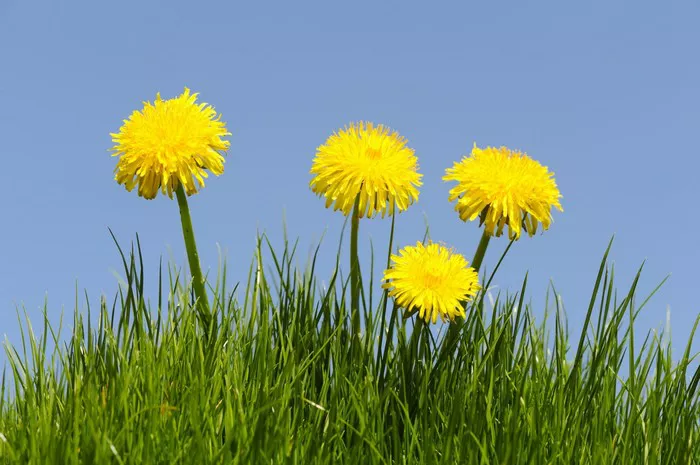Flowers, with their vibrant colors and enchanting fragrances, have long captivated the human imagination. Beyond their aesthetic appeal, flowers also exhibit a fascinating array of behaviors, including the ability to open and close in response to environmental cues. While many flowers open their petals to bask in the warmth of the sun during the day, there are some species that undergo a remarkable transformation at night, closing up until the dawn. This phenomenon, known as nyctinasty, serves various purposes ranging from protection against nocturnal predators to conservation of resources. In this article, we delve into the world of nocturnal blooms and explore 15 flowers that close at night.
1. Evening Primrose (Oenothera biennis)
Native to North America, the Evening Primrose is renowned for its stunning yellow blooms that unfurl during the day and gradually close as night approaches. This flower’s evening ritual has earned it the name “Evening Primrose” and makes it a delightful sight to behold in gardens and natural landscapes.
2. Morning Glory (Ipomoea)
Contrary to what its name suggests, the Morning Glory is another flower that closes up at night. These trumpet-shaped blossoms come in an array of colors and are known for their rapid growth and charming blooms, which open in the morning and close by afternoon, with some varieties closing even earlier as the day progresses.
3. Water Lily (Nymphaea)
Renowned for its serene beauty, the Water Lily is an aquatic plant that boasts large, elegant flowers that float upon the water’s surface. While they bask in the sunlight during the day, these exquisite blooms close at nightfall, only to reopen with the dawn of a new day.
4. California Poppy (Eschscholzia californica)
The California Poppy, the state flower of California, showcases vibrant orange petals that dazzle in the sunlight. However, as evening descends, these petals gradually fold inwards, encapsulating the flower until the next morning when they unfurl once more.
5. Daylily (Hemerocallis)
True to its name, the Daylily blooms last only for a day, opening in the morning and closing as the sun sets. Despite their short lifespan, these flowers are cherished for their diverse colors and striking appearance, adding bursts of color to gardens around the world.
6. Scarlet Pimpernel (Anagallis arvensis)
The Scarlet Pimpernel, a petite flower with scarlet petals, is known for its tendency to close during inclement weather and at night. This adaptive behavior helps protect the delicate blooms from adverse conditions, showcasing nature’s resilience in the face of changing environments.
7. Four O’Clock Flower (Mirabilis jalapa)
Named for its peculiar habit of opening its flowers in the late afternoon, the Four O’Clock Flower is a prime example of nocturnal blooming. These fragrant flowers come in a variety of colors and close up as dusk approaches, adding an element of mystique to evening gardens.
8. Night-Blooming Cereus (Epiphyllum oxypetalum)
Unlike most flowers that close at night, the Night-Blooming Cereus boasts an extraordinary nocturnal display. This exotic cactus plant produces large, fragrant flowers that bloom exclusively at night, captivating observers with their ephemeral beauty and enchanting fragrance.
9. Hibiscus (Hibiscus rosa-sinensis)
The Hibiscus, with its vibrant, trumpet-shaped flowers, is a tropical plant renowned for its ornamental value and medicinal properties. While these blooms typically open during the day, some species exhibit a nocturnal habit, closing their petals as darkness falls.
10. Poppy (Papaver)
Poppies, with their papery petals and striking colors, are beloved for their enchanting appearance. While many poppy species open their blooms in the sunlight, some varieties, such as the Iceland Poppy, close up at night, preserving their delicate petals until dawn.
11. Sensitive Plant (Mimosa pudica)
The Sensitive Plant, also known as the Touch-Me-Not, is renowned for its unique foliage and delicate pink flowers. While its leaves fold in response to touch, the flowers also exhibit nyctinastic behavior, closing at night and reopening in the morning, adding to the plant’s allure.
12. Night Phlox (Zaluzianskya capensis)
True to its name, the Night Phlox is a captivating flower that releases a sweet fragrance at night. Native to South Africa, this plant’s small, star-shaped blooms open in the evening, attracting pollinators with their scent before closing again at daybreak.
13. Gazania (Gazania rigens)
The Gazania, with its daisy-like flowers and vibrant hues, is a drought-tolerant plant native to South Africa. While these blooms thrive in the sunlight, they close at night or during overcast weather, conserving moisture and protecting their pollen from moisture and nocturnal predators.
14. Angel’s Trumpet (Brugmansia)
Named for its trumpet-shaped flowers that hang downward like celestial instruments, the Angel’s Trumpet is a mesmerizing plant known for its ornamental value and hallucinogenic properties. While these flowers typically bloom in the evening, their fragrance and beauty are most pronounced at night.
15. Dandelion (Taraxacum)
Often considered a weed, the Dandelion boasts cheerful yellow flowers that transform into delicate white seed heads. While these blooms open during the day to attract pollinators, they close at night, protecting their seeds until they are ready for dispersal.
Conclusion
The world of flowers is filled with surprises, and the phenomenon of nocturnal blooming adds an extra layer of intrigue to nature’s tapestry. From the delicate petals of the Evening Primrose to the exotic allure of the Night-Blooming Cereus, these flowers offer a captivating glimpse into the wonders of the natural world, reminding us of the beauty that flourishes even under the cover of darkness.


